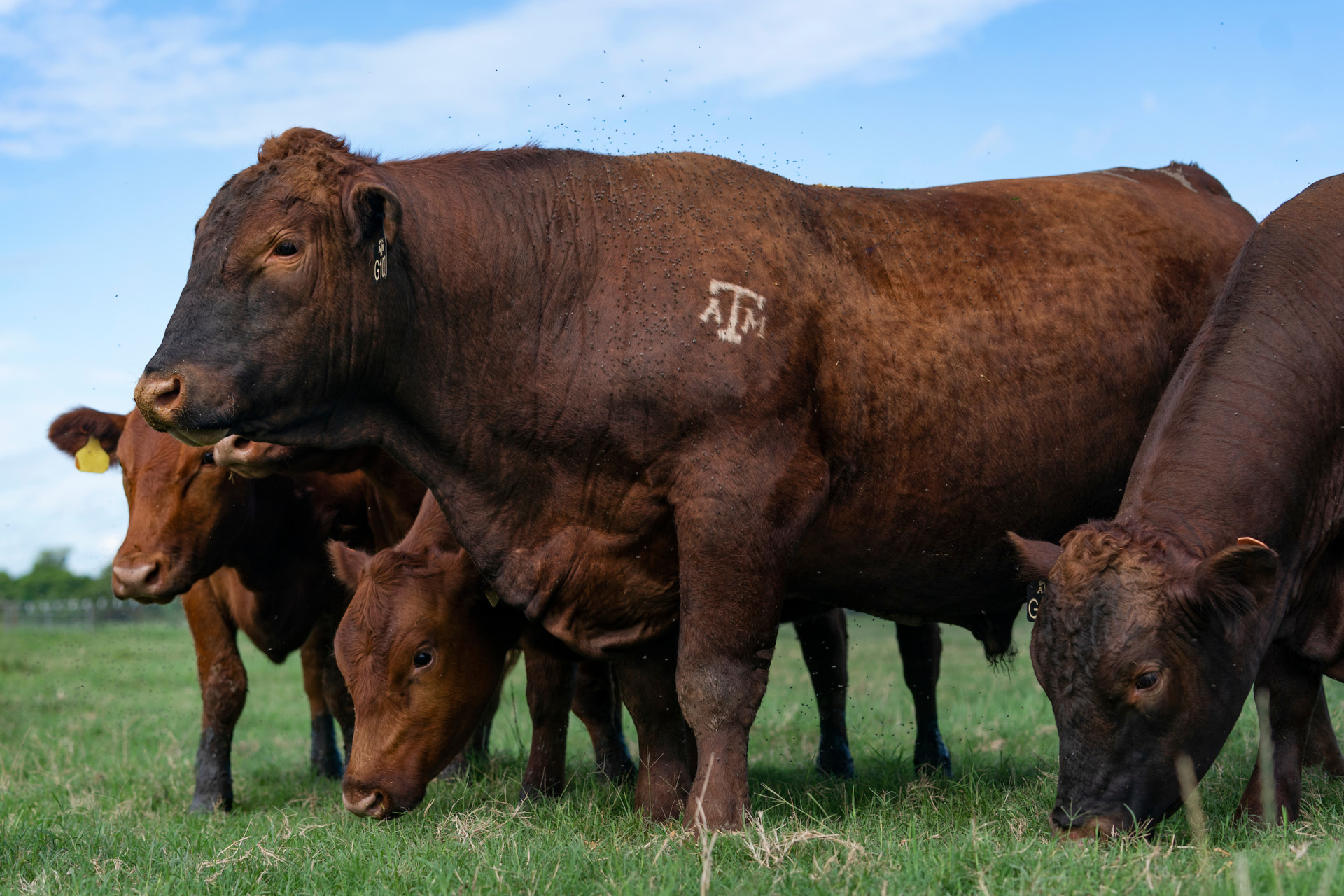As fall approaches, it is important to keep in mind proper nutrition and care of the herd sires after the breeding season. This is especially true for bulls under two years of age, according to Iowa Beef Center research scientist Garland Dahlke.
“It is common for a young sire to drop one to two body condition scores during the breeding season, so bringing the bull back into condition is the focus in the off season,” he said. “The bull is not a feedlot steer so a steady improvement with a moderate weight gain over the next few months is appropriate.”
Nutrition is dependent on the age of bulls and the amount of weight lost during the breeding season. High quality forage alone or a lower quality forage with some grain supplementation can work in re-establishing body weight.
For effective management, group bulls with similar nutritional needs during the winter. This also includes adequate bunk or feeder space, so the submissive bulls have a fighting chance.
Typically, mature bulls in fairly good condition can be managed on an all-roughage diet without supplementation during the winter months, Dahlke said. Hay quality should have 8% to 10% crude protein, and be fed at 2% of their body weight.
For young bulls, rations should be formulated to gain half a pound to 2 pounds per day based on age, size, and desired weight gain. Young bulls typically lose 50 to 200 pounds during their first breeding season, so prioritizing protein and energy in their diet will promote growth and subsequent reproductive health.
Young bulls fed 3 to 6 pounds of grain in the winter, roughage at 2% of body weight, and total diet protein content of 10% to 11% often reach the target rate of gain. For bulls used in both spring and fall calving herds, young bulls typically need to gain more with a target of 2 to 2.5 pounds per day to recover from weight loss.
Iowa State University Extension beef specialist Chris Clark, who also is a veterinarian, said post-breeding season can be a good time to do an overall health evaluation.
“Hopefully producers have been checking regularly throughout the breeding season and catching things like injuries, lameness, pinkeye, and other diseases,” he said. “There shouldn’t be any big surprises when bulls are pulled from the cows.”
Depending on the processing schedule, this may be a good time to vaccinate and treat for parasites, Clark said. Efficacy of external parasite control often has waned by the end of breeding season and bulls may have picked up internal parasites while grazing, so it may be beneficial to apply some kind of antiparasitic treatment.
Herd biosecurity is another top health priority.
“It may be worthwhile to test for things like trichomoniasis,” Clark said. “In a relatively closed herd, this probably isn’t a big concern, but if the bulls have had contact with neighboring herds or if new open cows were added to the herd prior to or during the breeding season, testing is wise.”
IBC extension cow-calf specialist Randie Culbertson said focusing on on your older bull is helpful now.
“This is also a good time to evaluate your older bull’s performance through last year’s calf crop,” she said. “Did his calves perform as you expected? Will you consider keeping his daughters as replacements? And the bigger question is, did his calves have any calving issues?
“A bull’s value is in the performance of his calves, and if his calves are not performing the way you would want, it may be time to consider replacing that bull,” Culbertson said.




